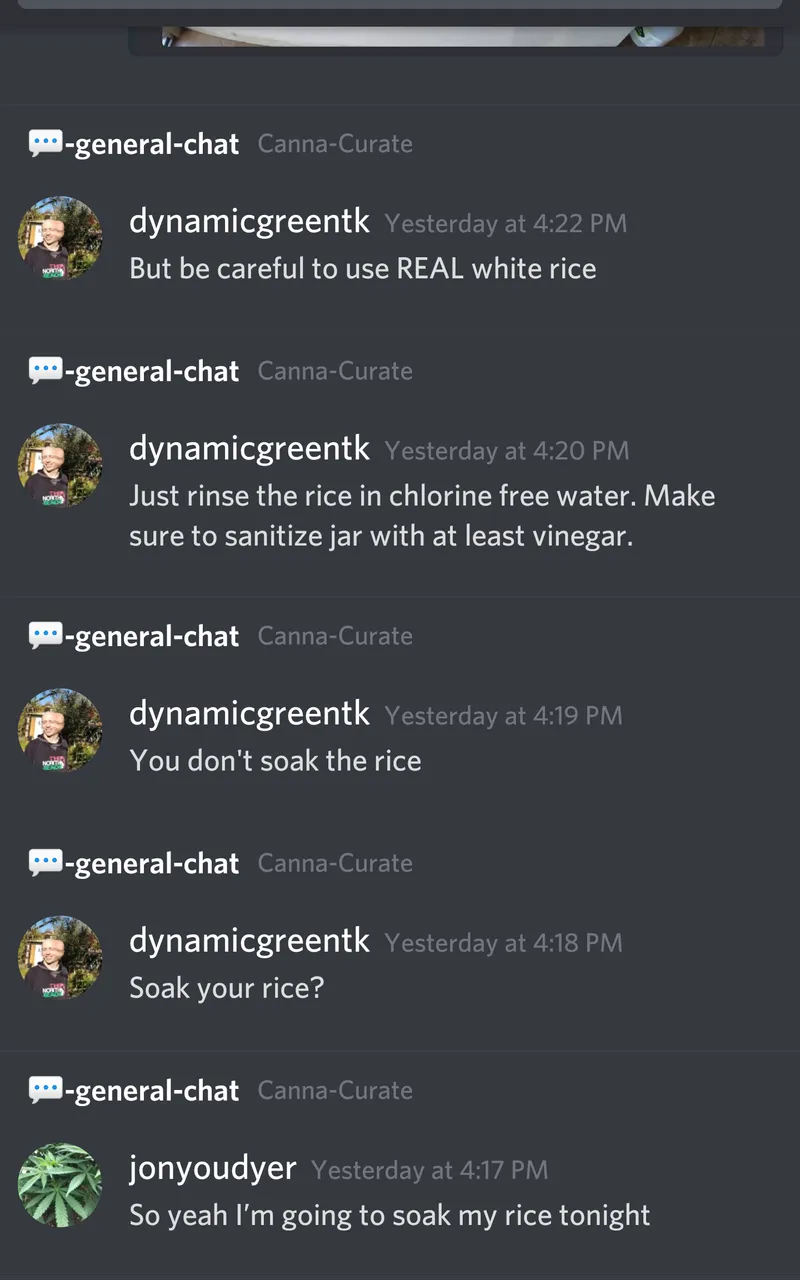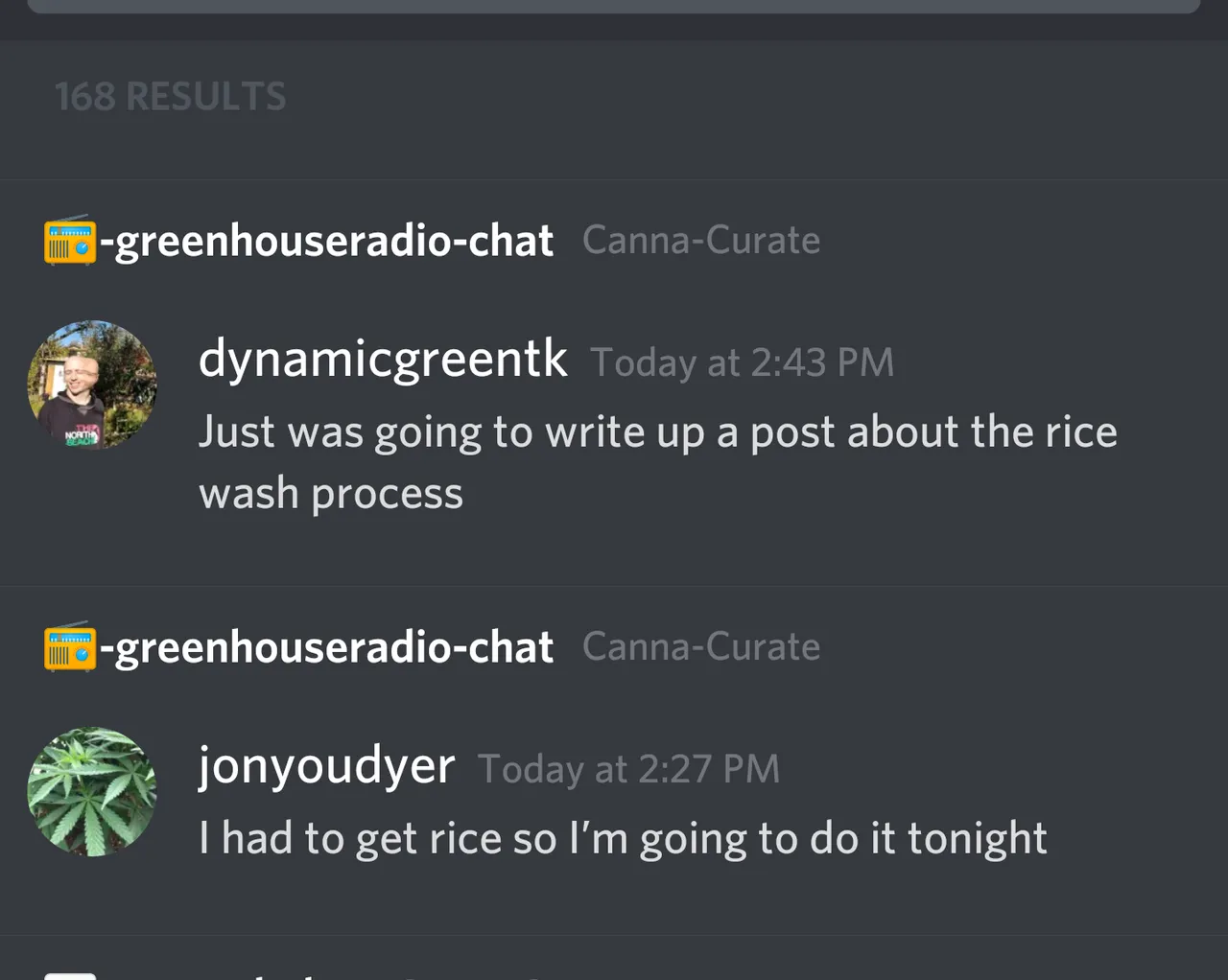
I have started my Korean Natural Farming again. First I must make some key inputs before I can start fully implementing it in a seed to harvest setup.
Wait... What is Korean Natural Farming?
"Korean Natural Farming (KNF) takes advantage of indigenous microorganisms (IMO) (bacteria, fungi, nematodes and protozoa) to produce fertile soils that yield high output without the use of herbicides or pesticides.[1] A result is improvement in soil health, improving loaminess, tilth and structure, and attracting large numbers of earthworms. KNF also enables odor-free hog and poultry farming without the need to dispose of effluent. This practice has spread to over 30 countries, and is used by individuals and commercial farms."
I know it is taboo but I can attest for the accuracy of this Wikipedia page I am referencing.
Now that I am back to blockchain posting, I decided to join in on discord again. I reunited with @jonyoudyer and the @canna-curate crew. Much to my surprise Jon create a Korean Natural Farming room there
, as he is so excited about this way of farming that he declared he was going to start his Rice Wash today. So, in light of his enthusiasm I will create my first Korean Natural Farming post on the Hive blockchain.
The @ecoTrain community seems to be a no brainer for this korean natural farming content I plan on consistently producing.


Without anymore rambling let's get started with the ricewash step of the Lactic Acid Bacteria serum shall we?
Step 1
- Aquire white rice. Short grain rice is preferred but medium or long grain is fine. You will have issues using brown rice although you still can use. People even use mung beans. I wouldn't suggest to try and execute based on the info I provided here as this technique is for white rice.
- be sure rice your using is not fake or mixed with cellulose type of rice.
- White rice wash is a starchy medium that will help attract and gather all microbes in your environment to this medium. Namely Lactic Acid Bacterias, phototropic bacteria and yeasts.
Step 2
- find a container and sanitize really well. Ie vinegar or bottle sanitizer. Be sure to wipe dry with a sterile cloth or paper towel and residues remaining from sanitizer.
- Surface area is key here. While I did use a mason jar here, typically using a Tupperware with a wide opening is more ideal.
Step 3
- Rinse rice and save water!
- Use de-chlorinated water but if not that should ok as Lactic Acid has shown to be resilient to bleach treated water, still try and use well water before and tap water and only use unfiltered tap water when it is the only option.
- Water should be milky white and unable to see through.
Step 4
- fill container 2/3 full of said rice wash to be fermented.
- Cover with a paper towel, cheesecloth or clothing that u can see through the tiny holes ie water can pass through(but be sure all laundry soap is rinsed out of clothing)
Step 5
- Place the Rice Wash ready for fermentation in a area with ample outside air flow or in the shade outside in a lush environment(preferred).
- Air systems (A/C) often don't allow for outside air to flow in. Be sure to leave in a room with an open window if you have to leave indoors.
Step 6
- The Rice Wash will seperate in 12-36 hours typically with temperatures of 70° F to 89° F. There will also be a thin film on top.
- Becareful once you go below or over that temperature range as the ferment will either take too long if too cold or too fast if too hot.
- The Rice Wash will separate and smell really sweet and if you wait too long or not long enough the sweet smell won't be there or will be faint.
This is the Rice Wash step for the LAB making process.
I will further detail the next steps of making Lactic Acid Bacteria in my next post in which we add this fermented rice wash to Whole Milk and then ferment that to get our Lactic Acid Bacteria.
Cheese making is involved as well! Stay tuned!
Thank you to @jonyoudyer for all of your support and @ecoTrain for providing a community centered around sustainability!
Here is my Instagram for greater access to myself and my Korean Natural farming content there
https://www.instagram.com/tkahrs702/
Also here are some cool videos on this process!
